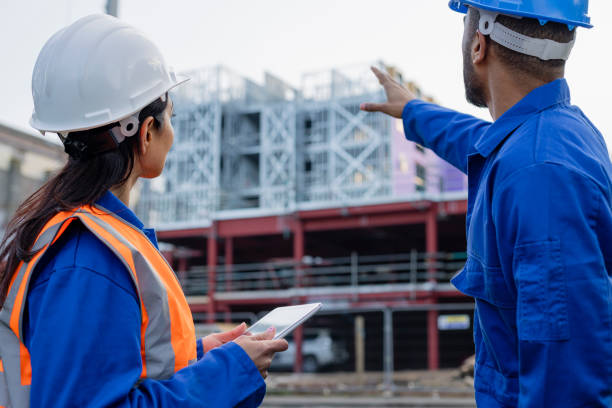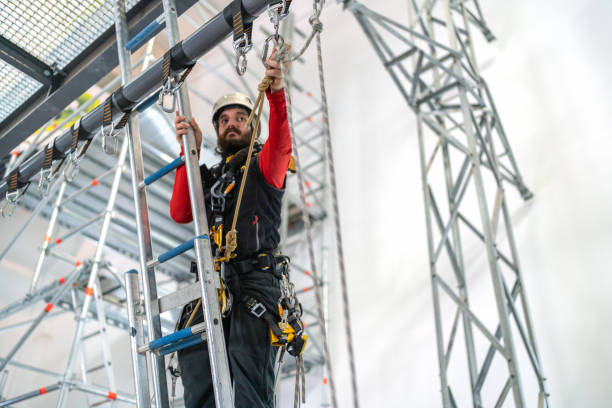Critical Scaffold Safety Tips to Avoid Disaster
As a construction professional, your responsibilities involve managing complex projects, navigating tight deadlines, and ensuring the safety of your team. With so much to oversee, it can be easy to overlook critical safety precautions, especially when working on scaffolding. However, failing to properly install and inspect scaffolding safety can lead to catastrophic accidents that cause severe injuries or even fatalities. You owe it to your team and your company to make critical scaffold safety tips to avoid disaster.
This article provides essential tips for avoiding disaster by implementing robust scaffold safety protocols. Following these best practices can help reduce risks, prevent accidents, and ensure your scaffolding meets or exceeds all industry safety standards. Your team’s safety depends on the precautions you put in place today. Make the time now to review these critical scaffold safety tips and avoid the dire consequences of a preventable accident tomorrow.
We should never sacrifice safety for speed or cost savings.
. Implementing a culture of safety and accountability is one of the most important responsibilities in your role.
Inspect Your Scaffold Before Use

Before using your scaffold, it is critical to inspect the entire structure to ensure it is secure and safe for work.
Check the Base
Ensure that you securely anchor the base plates to concrete foundations or tiebacks and ensure that you have firm contact with the ground for all wheels, casters, and leveling screws.
The scaffold should not sway, lean, or move in any direction.
Inspect Frame and Braces
Carefully check that you properly install and securely connect all frames, braces, rails, and planks without missing parts.
Frames and braces should be straight, undamaged, and locked together.
Ensure Proper Planking
You should evenly space the planking, cover the entire platform, and overhang supports by at least 6 inches but not more than 12 inches.
We do not allow missing, damaged or unstable planks. Light-duty scaffolds require a minimum plank thickness of 2 inches, while heavy-duty scaffolds require a minimum thickness of 3 inches.
Check Railings
You must properly install top rails, mid rails, and toeboards on all open sides and ends of platforms.
Railings provide scaffold fall protection and their absence presents a serious hazard.
Inspect Access
You must properly install and secure ascending and descending access points like ladders, stairs, and ramps. You should extend ladders 3 feet above platforms and tie them off.
Test All Parts Before Use
You should vigorously shake, push, and load the platforms and railings after fully assembling the scaffold to verify their stability before performing any work. If any part of the scaffold is unstable, you should not use it until repairs or adjustments have been made.
Your safety depends on it.
Ensure Proper Guardrails for Fall Protection
To prevent falls and injuries, proper guardrails are essential for any scaffold setup. As an employer, it is your responsibility to ensure full compliance with OSHA standards for fall protection.
Install guardrails along all open sides and ends of platforms more than 10 feet above lower levels.They should consist of a top rail, mid rail, and posts, and be able to withstand a force of at least 200 pounds.
Install top rails between 38 to 45 inches above the platform and install mid rails halfway between the top rail and the platform.
You should never use mesh, screens, or netting in place of guardrails. Only guardrails that meet OSHA requirements can serve as proper fall protection barriers.
Inspections and Maintenance
Routine scaffolding inspection of all guardrails, including posts, rails, gates, and components, should be performed daily. Damaged or defective parts must be repaired or replaced immediately. All repairs should restore guardrails to a condition meeting or exceeding the standards in effect at the time of initial installation.
Guardrails, along with all other scaffold components, should also undergo regular maintenance to prevent damage, and deterioration, and ensure maximum safety. All parts should be kept clean, properly secured, and free of defects, damage, or corrosion at all times.
By providing secure guardrails and performing routine inspections and maintenance, you can help prevent falls and ensure a safe work environment for anyone working on or around the scaffold. Compliance with these best practices may also help avoid potential legal liability in the event of an accident. Critical scaffold safety tips should be the top priority any scaffolding project.
Use Scaffold Planks That Are Uniformly Level
To ensure safe scaffolding and avoid disaster, the planking used must be uniformly level. Uneven planking poses risks of tripping, tools or materials rolling off edges, and instability.
Inspect Planks Before Installation
Examine each plank before installation to check for:
- Warping or bowing which prevents the plank from laying flat
- Splinters, cracks or damage that compromise integrity
- Proper thickness – planks should be at least 2 inches thick for most scaffold work
If any planks are compromised, replace them.
Install Planks Properly
Once inspected, install planks properly by:
- Laying planks side by side with no gaps between them. Planks should fully cover the entire scaffold platform area for maximum stability and safety.
- Securing planks to the scaffold frame using scaffold plank clips, straps or bolts to prevent shifting. Simply laying planks on the frame risks instability and planks slipping or falling.
- Double-checking that all planks are level before using the scaffolding. Use a level tool to confirm the scaffold platform is even to prevent tripping hazards and materials rolling off edges.
- Re-checking plank security and levelness regularly, especially after making any adjustments to the scaffold height or structure. Vibrations and movements during scaffold use can cause planks to become unlevel or unsecured over time.
Maintain Safe Planking
Once installed, be sure to:
- Avoid overloading planks beyond the maximum weight capacity. Overloading can cause planks to break or the entire scaffold structure to become unstable.
- Keep planks clear of debris, tools, materials and other tripping hazards. A clean, uncluttered platform is a safe platform.
- Replace any damaged or compromised planks immediately. Do not use the scaffold until all planks are in safe, working condition. Safety is the top priority.
Following these Critical Scaffold Safety Tips will help ensure scaffold planking is uniformly level and secure, avoiding disaster and maintaining a safe work environment. Safety should always come first.
Check That All Scaffold Components Are Secured Properly
To ensure your scaffold is secure and safe for use, inspect each component carefully.
Frame
Examine the frame, including the legs, braces, and platform, for any signs of damage or instability. Check that all pins, bolts, screws, and other fasteners are properly installed and tightened. Verify that the frame is level for maximum stability. An unleveled frame could lead to a collapse under weight.
Planking
Inspect the planking, also known as the scaffold boards or deck, for any cracks, holes, or other damage before use. Ensure all planking is properly secured to the frame so there are no uneven surfaces or unstable areas. Gaps or unstable planking pose a risk of tools, materials, or workers falling through.
Guardrails
Guardrails provide fall protection and should be installed on all open sides and ends of the scaffold platform. Check that top, mid, and bottom guardrails are securely installed and intact. Guardrails should be constructed of a sturdy material and able to withstand a minimum of 200 pounds of pressure. Missing or damaged guardrails expose workers to the risk of falls from heights.
Access
Safe access to all levels of the scaffold is essential. Examine any ladders, stairs, ramps, hatchways, and other entry points to ensure they are properly installed and secured. Check that there are no missing rungs, steps or handrails. Insecure access points could lead to slips, trips or falls when climbing on or off the scaffold.
Anchorage
For maximum stability, the scaffold should be securely anchored to an adjacent building or structure. Check that all anchors, ties, and braces are properly installed and taut. Anchorage helps prevent instability, swaying, or tipping over of the scaffold due to wind or weight. Lack of proper anchorage is a major cause of scaffold collapses.
Following these critical scaffold safety tips before using a scaffold will help avoid the risk of disaster. Take the time to inspect each component carefully—your safety depends on it.
Train All Workers on Scaffold Safety Best Practices

To ensure the safety of all workers, proper training on scaffold safety best practices is essential. All employees should undergo thorough training on scaffold assembly, use, and dismantling before beginning work on any scaffolding.
Proper Training
All workers must be trained by a competent person on the specific type of scaffold being used, including how to correctly erect, maintain, and disassemble the structure. Workers should understand maximum load capacities and not overload scaffolds. They should also be instructed on the proper use of guardrails, toeboards, and other fall arrest systems to prevent falls.
Fall Protection
Workers must be trained on the proper use of fall protection equipment like safety harnesses and guardrails. Guardrails should be installed along all open sides and ends of scaffold platforms. Workers should wear safety harnesses with lanyards attached to anchor points anytime they are on a scaffold more than 10 feet above the ground. Proper training on fall protection is key to reducing the risk of falls, which are a leading cause of scaffold-related injuries and fatalities.
Regular Evaluation
Ongoing training and evaluation help ensure safety practices are being properly followed. Competent persons should regularly evaluate how well the training program is working and make improvements as needed. They should observe workers on the jobsite and provide retraining for anyone not properly following the required safety procedures. Retraining may also be necessary if there are any changes to the type of scaffold, fall protection, or safety equipment being used.
By implementing a comprehensive training program and continuously evaluating and improving it, companies can significantly reduce the risks associated with scaffolding work. Proper education and safety practices are essential to preventing injuries and ensuring the wellbeing of all workers.
Conclusion
As you have seen, scaffold safety requires diligence and attention to detail. By following these critical tips for erecting, using, and dismantling scaffolding properly, you can avoid catastrophic accidents and ensure the safety of both workers and bystanders. Take the time to inspect all components before assembly, provide adequate guardrails and toeboards, distribute weight evenly, and never overload the structure. Wear proper safety gear, harness, and hardhat at all times. When dismantling, do so systematically from top to bottom. Scaffolding may seem routine, but one small mistake can lead to life-threatening injury. Stay focused, follow the rules, and make safety your top priority every time you work at height. Lives depend on it.
